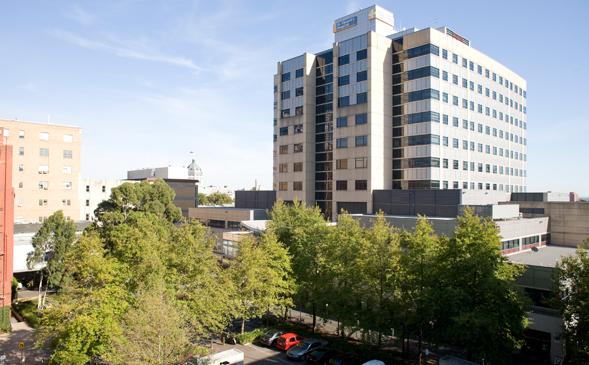
When you’re sitting in an emergency department, every tick of the clock feels like an eternity.
But what if your wait wasn’t just determined by your symptoms—but by decades of inequality embedded deep in the healthcare system?
One Melbourne hospital has taken a bold step to change that, sparking both praise and outrage across the country.
St Vincent’s Hospital in Melbourne has introduced a groundbreaking policy ensuring Indigenous patients are seen within 30 minutes of arrival—a move designed to close long-standing healthcare gaps but one that’s become a lightning rod for political debate.
The hospital, which treats more First Nations patients than any other in Victoria—around 5 per cent of all presentations—introduced the rule in April 2024.
Under the new system, Indigenous patients automatically receive a minimum category-three triage, meaning they must be seen within half an hour.
Understanding Triage
- Emergency departments rank patients by urgency, from Category 1 (immediate treatment) to Category 5 (seen within two hours).
- Category 3 patients are meant to be seen within 30 minutes, while Category 4 and 5 patients wait one to two hours respectively.
Crucially, the policy doesn’t let Indigenous patients skip ahead of more critical cases—it simply ensures their care isn’t delayed beyond that 30-minute mark.
'Research conducted in St Vincent's Hospital Melbourne's ED showed First Nations patients were, on average, waiting longer to be seen compared to non-Indigenous patients.'
Nationally, data suggests Indigenous and non-Indigenous Australians have similar emergency wait times—typically between 18 and 20 minutes in recent years.
But St Vincent’s decision wasn’t based solely on averages—it was about tackling deeper, systemic problems in healthcare access.
Indigenous Australians attend emergency departments roughly twice as often as non-Indigenous Australians—25 visits per 1,000 people compared to 13 per 1,000.
This higher rate is often linked to limited access to primary healthcare, especially in rural and regional communities.
Even more concerning, Indigenous Australians leave hospital against medical advice at rates up to 30 times higher than non-Indigenous people—especially Aboriginal men aged 25 to 44.
Experts believe this is connected to past negative experiences and ongoing cultural safety issues in the healthcare system.
Research from St Vincent’s showed that when Indigenous patients were seen within an hour, they were more likely to remain engaged with their treatment.
This finding supports national research showing that having Indigenous Liaison Officers and Aboriginal Health Workers in hospitals improves patient outcomes and reduces early discharges.
Healthcare experts also stress that consistent triage practices are vital for fair treatment and that hospitals should regularly audit triage scores across populations to ensure equity.
However, the new policy has not been without controversy.
Victoria’s Shadow Health Minister Georgie Crozier called it ‘discrimination’, arguing that ‘triaging of patients should be done on medical need, not based on the colour of your skin.’
Critics see it as unfair preferential treatment, but supporters point out that it doesn’t bypass medical urgency—it simply corrects systemic delays that previously left Indigenous patients waiting longer.
The debate comes as Victoria prepares to implement Australia’s first state treaty legislation, with some opponents linking the hospital’s move to broader treaty discussions, though health experts note that equity initiatives like this have been developing for years.
Understanding triage categories
Category 1: Immediate (resuscitation needed)
Category 2: Within 10 minutes (emergency)
Category 3: Within 30 minutes (urgent)
Category 4: Within 60 minutes (semi-urgent)
Category 5: Within 120 minutes (non-urgent)
The St Vincent's policy ensures Indigenous patients receive Category 3 status minimum, but doesn't override higher urgency categories based on clinical need.
Beyond the headlines, the policy reflects a stark truth—Indigenous Australians face preventable hospitalisations at nearly three times the rate of other Australians.
St Vincent’s says the approach aligns with national safety and cultural standards under the Closing the Gap framework, which calls for culturally safe healthcare practices.
The hospital reports that since the policy’s rollout, waiting times between Indigenous and non-Indigenous patients have become nearly identical, without affecting overall emergency department flow.
The controversy highlights a deeper question—what does true healthcare equity look like?
While critics frame the policy as unfair, advocates say it’s a necessary correction to historical disadvantages.
Emergency medicine training now includes modules on bias in triage and cultural considerations, acknowledging that equity sometimes requires targeted approaches for different groups.
St Vincent’s has even received a Victorian Public Healthcare Award for the initiative, recognising that ‘First Nations patients are now seen more promptly than non-Indigenous patients’—a milestone supporters argue is both overdue and essential.
The bigger picture on Indigenous emergency care
- Indigenous Australians use EDs twice as often as other Australians
- National wait times are similar, but local variations exist
- Higher rates of leaving treatment early suggest engagement issues
- Cultural safety measures can improve healthcare outcomes
- The policy aims to address specific barriers, not override clinical priorities
What This Means For You
St Vincent’s Hospital in Melbourne now guarantees that Indigenous patients will be seen within 30 minutes, a policy introduced to address long-standing healthcare inequities.
While critics have labelled the move as discriminatory, experts emphasise that it is designed to ensure fair access rather than give preferential treatment.
Early data suggests the policy has improved patient engagement without negatively affecting other patients.
For everyday Australians, this highlights how targeted policies can reshape healthcare experiences and prompts reflection on how equity measures might affect the broader community, including how we expect care to be delivered in our local hospitals.
If you’re interested in seeing how hospital wait times can affect real patients, there’s another story that highlights this issue in a striking way.
It details a patient’s two-hour ordeal in an emergency department, revealing how systemic delays can create stressful and potentially dangerous situations.
Reading this story can provide more context on why policies aimed at reducing wait times, like the one at St Vincent’s, are so important.
Read more: ‘Degrading and stressful’: Patient's two-hour hospital ordeal reveals healthcare system flaw
Divisive Melbourne’s St Vincent’s hospital policy fasttracks Indigenous patients over others — Reports on St Vincent’s Hospital introducing a policy guaranteeing Indigenous patients are seen within 30 minutes, sparking debate over healthcare equity and preferential treatment.
[https://www.news.com.au/lifestyle/h...e146e8162dff254342c529f653741?from=rss-basic)
3.14 Access to services compared with need—AIHW Indigenous HPF — Provides data showing Indigenous Australians present to emergency departments at higher rates than non-Indigenous Australians, highlighting gaps in healthcare access.
[https://www.indigenoushpf.gov.au/me...s/3-14-access-to-services-compared-with-need)
Patients treated by urgency category | Victorian Agency for Health Information — Explains emergency department triage categories and typical wait times for each level of urgency.
[https://vahi.vic.gov.au/emergency-c...gency-care/patients-treated-urgency-category)
Emergency department care access—Australian Institute of Health and Welfare — Shows national data confirming Indigenous Australians have similar median emergency department wait times to non-Indigenous Australians.
[https://www.aihw.gov.au/reports-dat...orts-data/myhospitals/intersection/access/ed)
Use of emergency departments by Aboriginal and Torres Strait Islander people—PubMed — Research indicating that Indigenous Australians attend emergency departments about twice as often as other Australians.
[https://pubmed.ncbi.nlm.nih.gov/16454778/](https://pubmed.ncbi.nlm.nih.gov/16454778/)
“They just don't like to wait!” — NSW Health report highlighting that Indigenous people discharge against medical advice at significantly higher rates than non-Indigenous people.
[https://www.heti.nsw.gov.au/__data/...df_file/0008/442178/leanne_wright_report.pdf)
RRH: Rural and Remote Health article: 8231 — Discusses how Indigenous Liaison Officers and Aboriginal Health Workers in EDs can reduce early discharge rates for Indigenous patients.
[https://www.rrh.org.au/journal/article/8231/](https://www.rrh.org.au/journal/article/8231/)
Emergency Triage Education Kit (ETEK), second edition | Australian Commission on Safety and Quality in Health Care — Emphasises that accurate and consistent triage is essential for equitable patient care.
[https://www.safetyandquality.gov.au...ncy-triage-education-kit-etek-second-edition)
Nov 2023 Guidelines on the Implementation of the Australasian Triage Scale in — Recommends auditing triage scores to ensure equity across populations.
[https://acem.org.au/getmedia/51dc74...delines_on_Implementation_of_ATS_Jul-16.aspx)
Cultural safety in health care for Indigenous Australians: monitoring framework, Module 3: Access to health care services—Australian Institute of Health and Welfare — Highlights that Indigenous Australians experience nearly three times the rate of potentially preventable hospitalisations compared to non-Indigenous Australians.
[https://www.aihw.gov.au/reports/ind...ents/module-3-access-to-health-care-services)
Emergency Triage Education Kit (ETEK), second edition | Australian Commission on Safety and Quality in Health Care — Notes that modern emergency medicine training includes content on bias at triage and cultural considerations.
[https://www.safetyandquality.gov.au...ncy-triage-education-kit-etek-second-edition)
Can targeted healthcare policies truly close long-standing gaps—or will they always stir controversy in a system built on 'equal treatment' that hasn’t always been equal in practice?







